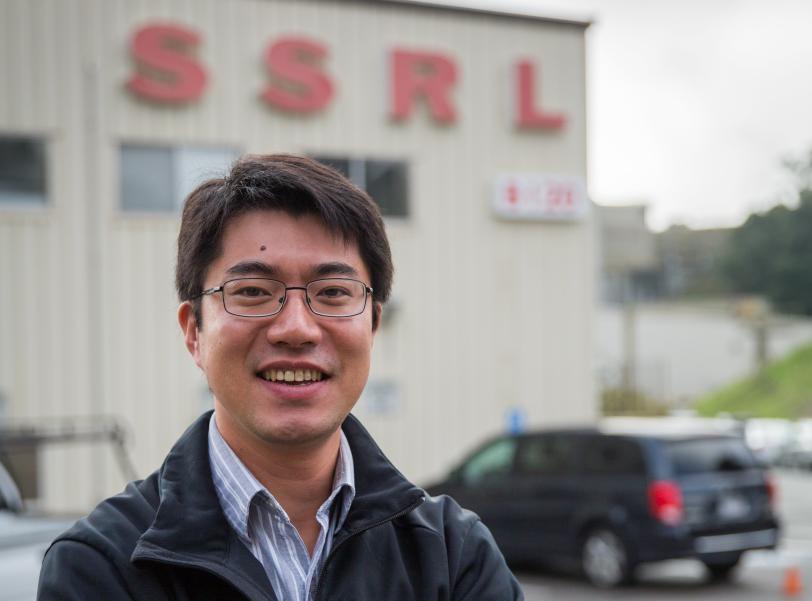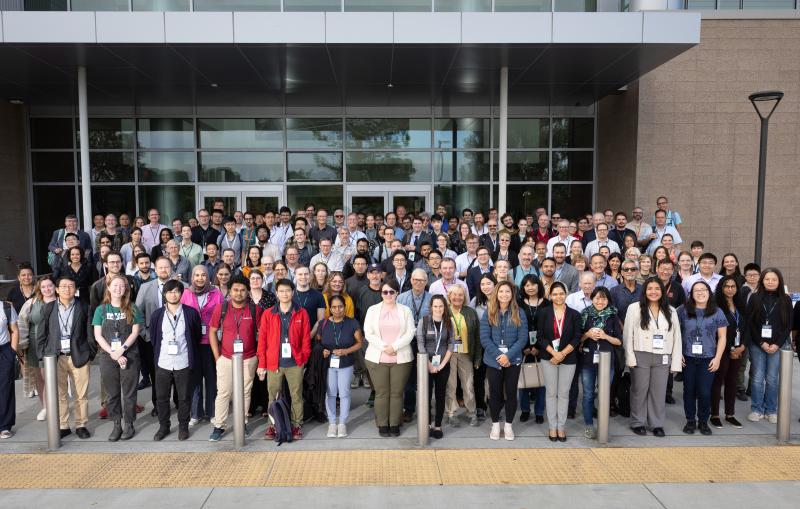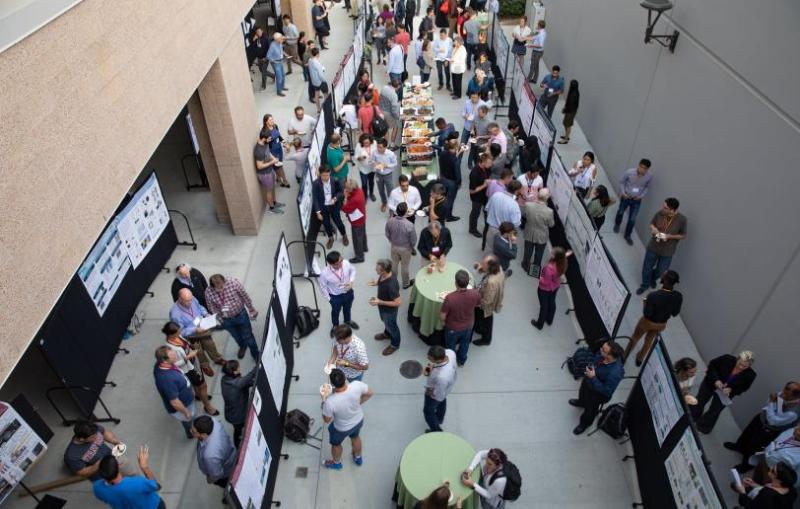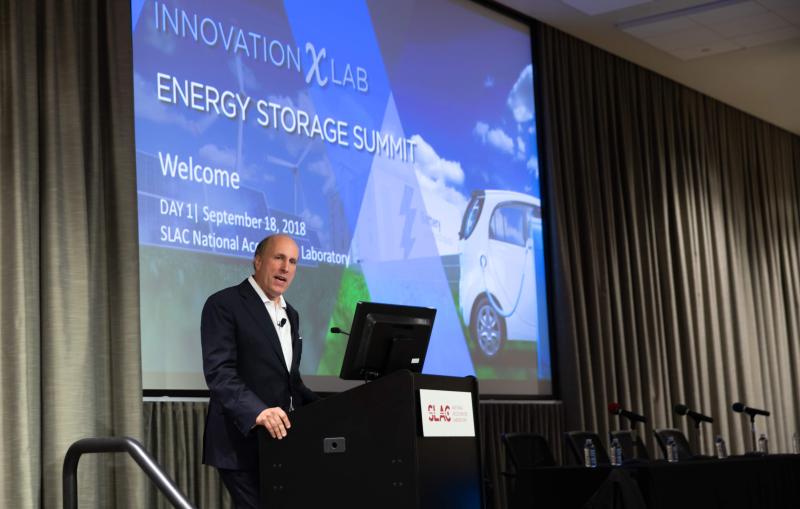Yijin Liu Receives 2016 Spicer Award For Substantial Research Contributions Using X-ray Microscopy
Liu acknowledged for wide-ranging work in energy materials, catalysis, carbon sequestration, material in extreme conditions and scientific big data mining.
Yijin Liu is the winner of Stanford Synchrotron Radiation Lightsource’s (SSRL) 2016 William E. and Diane M. Spicer Young Investigator Award. The award is given each year to early-career X-ray scientists who perform research at SSRL, a DOE Office of Science user facility at SLAC National Accelerator Laboratory.
As an expert in X-ray spectromicroscopy, Liu’s work spans batteries, catalysis for petroleum refining, carbon sequestration, material under extreme conditions, and even scientific big data mining.
“That’s the beauty of working as a staff scientist at a facility such as SSRL,” Liu says. “Every day, I work with experts with different professional backgrounds, and it gives me insight into the challenges we are facing in different research fields.”
This broader scientific vantage point allows him to go beyond a support role and contribute his own ideas to projects, or connect scientists who might have similar issues in their research, Liu says.
Since he joined SSRL in 2009, Liu has published more than 50 scientific publications.
An Interest in Images
Liu’s interest in photography led to his imaging work as an X-ray scientist. During his doctoral studies in Beijing, his research focused on medical images, looking at ways to help doctors understand X-ray results.
“The photo is a straightforward way for me to present something,” Liu says. “Compared to other scientific techniques, the result you’re looking for is often obvious. If you see a crack, there’s a crack.”
After earning his PhD in optics from the University of Science and Technology of China, Liu began working at SSRL as a postdoc. He started using X-rays to look at details in new materials with Piero Pianetta, professor of electrical engineering at Stanford University and now deputy director of SSRL.
In 2012, Liu became an associate staff scientist at SSRL and was promoted to staff scientist in 2015.
For one of his major projects at SSRL, Liu and his colleagues developed imaging software called TXM Wizard to help researchers collect and interpret their transmission X-ray microscopic results. It automates many of the functions researchers previously had to perform by hand and provides support with analyzing the imaging data. The team made the program available to the public, and it has been downloaded over 5,600 times in more than 50 countries.
Mentoring and Scientific Collaborations
Liu’s recommendations for the Spicer Award include letters from last year’s award winner and now assistant professor of chemistry at Virginia Tech, Feng Lin, and scientists at three national labs, including SLAC.
Marca Doeff, a staff scientist at Lawrence Berkeley National Laboratory, has partnered with Liu on multiple battery projects. In her recommendation letter, she wrote about Liu’s strong support of scientists who conduct research at SSRL, and added that his “pleasant demeanor also makes it a pleasure to collaborate with him.”
A long-time collaborator of Liu’s, Xiao-Qing Yang at Brookhaven National Laboratory (BNL), wrote that he once asked Liu for advice on new equipment at Brookhaven and expected to discuss the issues over the phone. To his surprise, Liu came to BNL to help.
“Although all the equipment and software are new to Yijin, he was able to master them in a very short time (less than 6 hours),” Yang wrote. “Yijin also worked very enthusiastically with all members in my research group during his one week stay at BNL and developed a plan for collaborative research on batteries between BNL and SSRL.”
Liu also mentors high school, college and graduate students during summer internships. His intern this past summer, Hugo Jenkins, is an undergraduate mathematics major at University of California-Berkeley. They worked together on data mining of X-ray microscopic images.
Jenkins says within the first week, Liu showed him how to mount an irregularly shaped 20-micron size shard of shale on the sharpened tip of a paperclip. Using one of Jenkins’ own hairs, they attached tiny gold spheres to the shale to track its rotation under the microscope. They made it successfully on the first try.
“Yijin explained to me that when we first mounted this sample, it was nothing but a randomly selected tiny piece of rock.” Jenkins says. “But after we collected several successful datasets on it, this piece of rock might appear in a research paper, and we or others might want to perform further measurements for comparison. This particular piece of rock became irreplaceable.”
The internship program is important to the field, Liu says, because it allows potential X-ray scientists to gain experience at an early age, and then use this experience to make informed career decisions.
The Spicer Award will be presented to Liu during the 2016 LCLS/SSRL Annual Users' Meeting and Workshops at SLAC. The award is named in honor of the Stanford University professor William Spicer and his wife Diane. Spicer was a co-founder of the Stanford Synchrotron Radiation Project in 1972, which would later become SSRL.
Contact
For questions or comments, contact the SLAC Office of Communications at communications@slac.stanford.edu.
SLAC is a multi-program laboratory exploring frontier questions in photon science, astrophysics, particle physics and accelerator research. Located in Menlo Park, Calif., SLAC is operated by Stanford University for the U.S. Department of Energy's Office of Science.
SLAC National Accelerator Laboratory is supported by the Office of Science of the U.S. Department of Energy. The Office of Science is the single largest supporter of basic research in the physical sciences in the United States, and is working to address some of the most pressing challenges of our time. For more information, please visit science.energy.gov.






